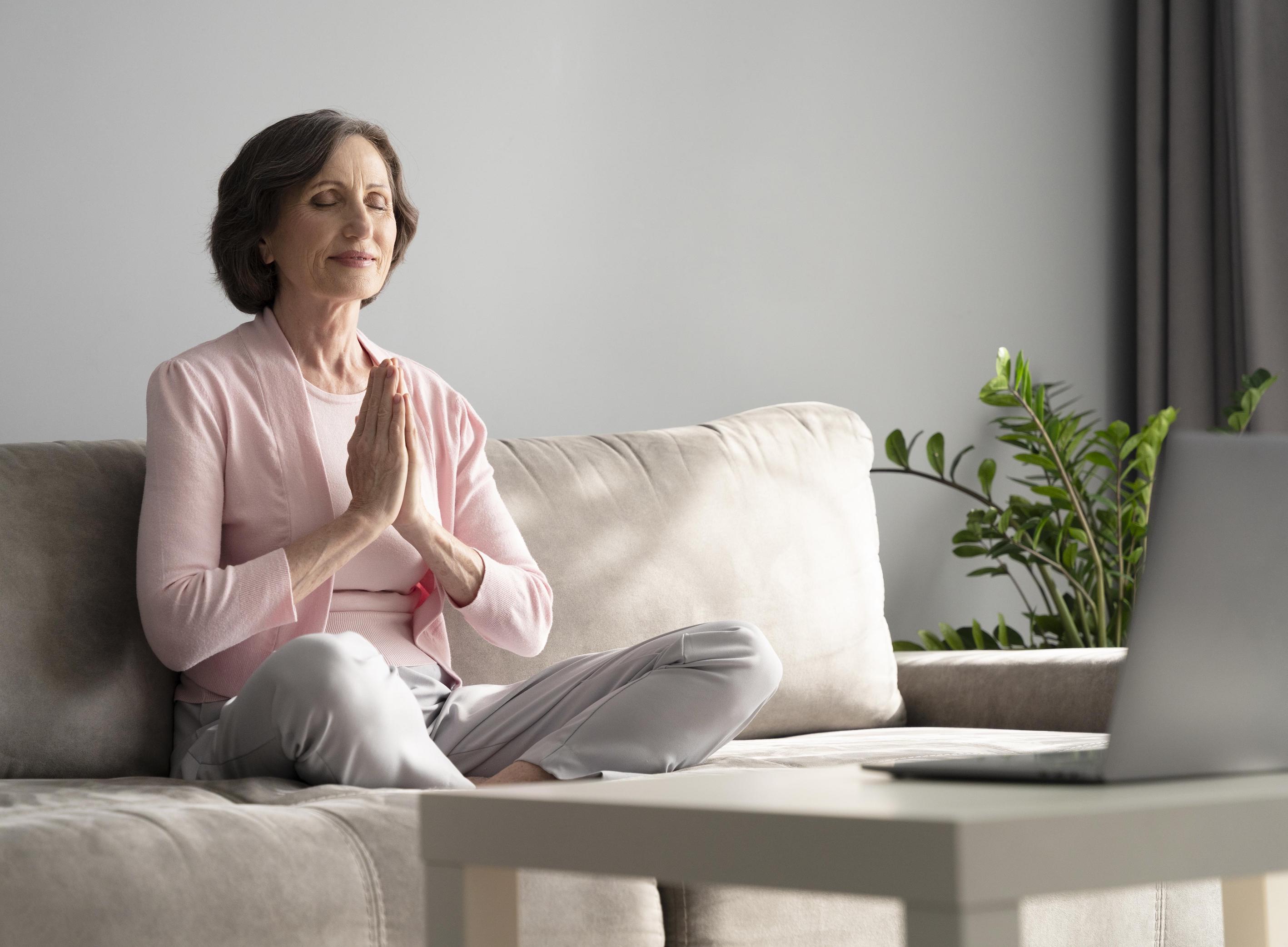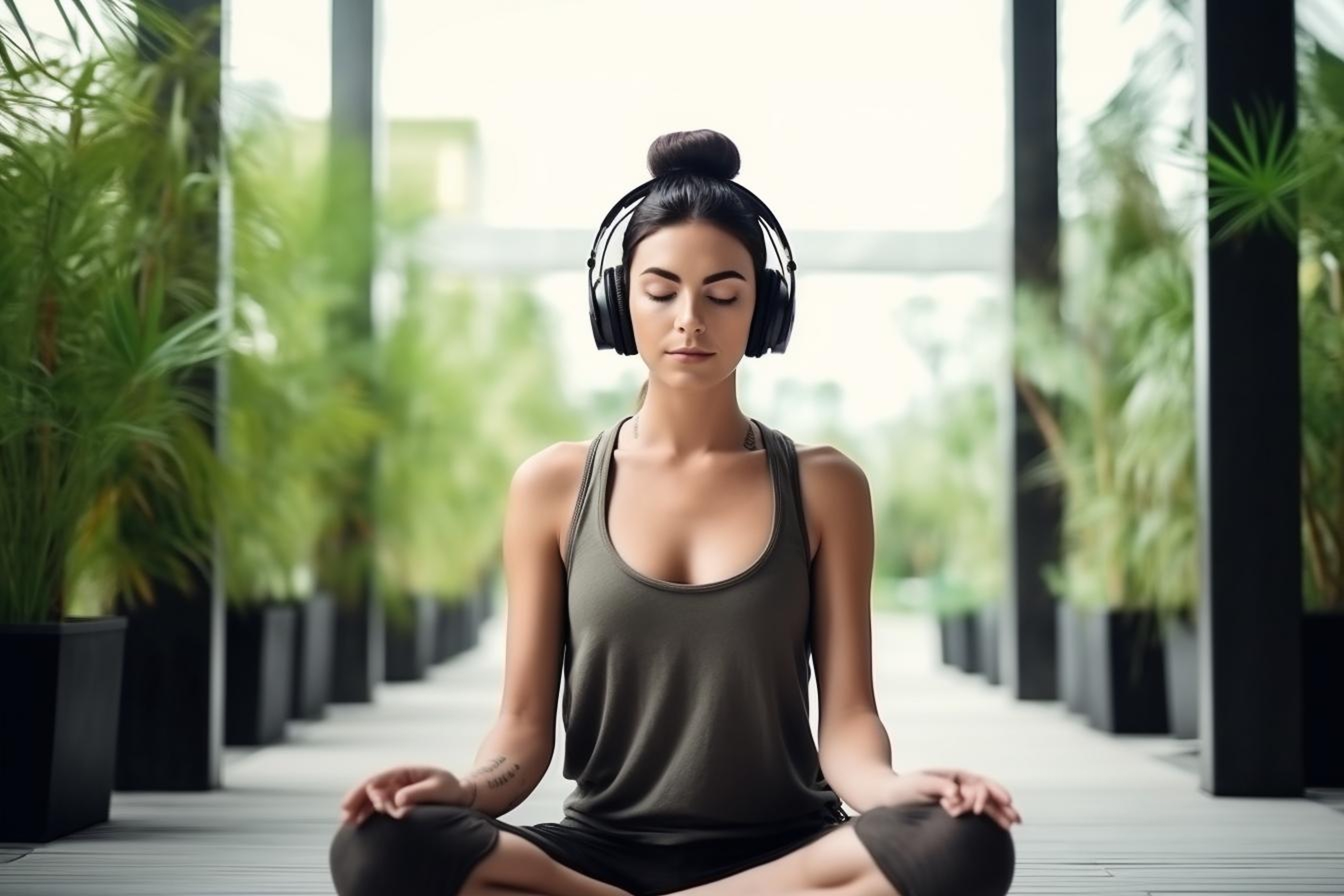Basic guide to breathing techniques

Daily, we carry out things or actions automatically and naturally, such as blinking or breathing. We do it so unconsciously that we have forgotten the benefits of making certain practices conscious for physical and mental well-being.
Let’s talk specifically about breathing, which is an involuntary process that helps us nourish and oxygenate our body, but what if we take a moment to focus on how we breathe?
Conscious breathing is a series of exercises —we share some of them below— to accelerate, pause or lengthen the entry and exit of air, to bring several benefits such as:
Improve digestion
Correct oxygenation of the body allows physiological processes to work better, therefore the digestive system will see the benefits of conscious breathing reflected.
Decrease muscle tension
Controlling the rhythm of your breathing will allow your muscles to follow that direction and relax, this will allow each part of your body to oxygenate better and will make you feel more relaxed.
Promote quality of sleep
With slower breathing exercises, entering a relaxed state will prepare your mind for a deeply restful sleep. In addition, conscious breathing will make you sleep more easily.
Increase energy
Exercises that speed up breathing will automatically activate creativity, and the rapid oxygenation of the body will cause your energy to rise. Perfect to start the day.

Either in the morning or at night, very basic techniques will guide you to improve your well-being. We share 4 essentials to introduce you to conscious breathing, shall we begin?
1. Box or square breathing
It consists of 4 simple steps, you can be sitting on a flat surface or standing as long as the spine remains straight.
- Inhale through your nose 4 times and try to fill your lungs.
- Hold your breath for a count of 4.
- Exhale gently through your mouth for 4 seconds to get all the air out.
- Hold for another 4 seconds and repeat for at least 5 minutes.
2. Breath of fire
In yoga, it is known as pranayama —and there are many techniques, such as humming breath— but this breath of fire is a stimulant to activate the mind and body, as it consists of inhaling and exhaling quickly and consciously.
- Sitting in a comfortable posture with your back straight, relax your shoulders and place your hands on your knees or to your side.
- Start with 2 slow and deep breaths, inhale through your nose, and exhale through your mouth.
- When you inhale, make yourself aware that the abdomen is inflated until the air also fills your lungs, and when you exhale, make all the air go out until you feel how the abdomen contracts.
- Little by little try to make the exhalations more energetic, short, and rhythmic, you will begin to feel a little heat, so you should do this breath for a maximum of 1 minute.
3. Breathing 4-7-8
An exercise to relieve stress and relax before bed, with a breathing pattern that is very easy to do and remember. You can do it sitting, standing, or lying down.
- Inhale through your nose in 4 seconds.
- Hold your breath for a count of 7.
- Exhale through your mouth for 8 seconds and repeat 4 times.
4. Alternate breathing through the nostrils
This exercise also originates from yoga and helps align the mind, body, and breath. It also helps you focus 100% on the way you breathe. It is recommended to perform this technique sitting down and with your back straight.
- Inhale and exhale a few times through your nose.
- With the thumb of your right hand, press on the right nostril, inhale, hold for a few seconds, exhale, and hold again. Always doing it through the nose.
- Switch hands and press the left nostril; inhale and hold, exhale and hold again.
- Repeat with one nostril and then the other for up to 5 minutes.
When doing any exercise, you can accompany it with relaxing music or sounds of nature, such as the sea or the forest.

Which one of these techniques connects better with you?




